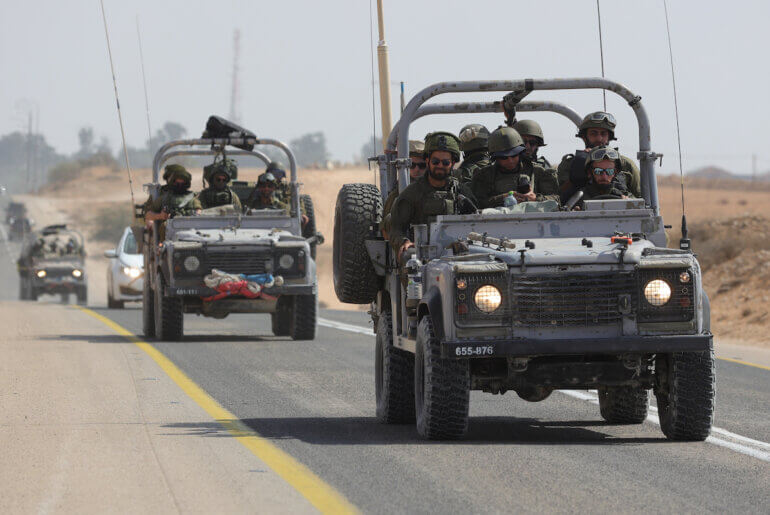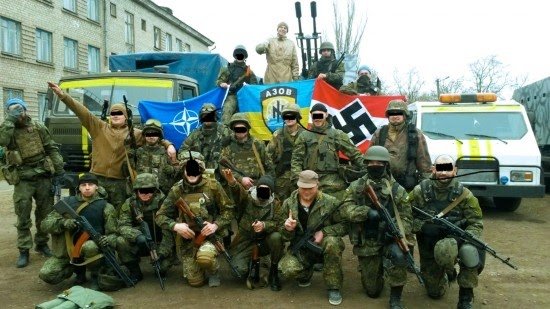Israeli sources: Israeli military killed many Israeli soldiers and civilians on 7 October, by calling in an air raid on an overrun command military base and by tank shelling both fighters and residents inside Kibbutz Be’eri. Mondoweiss, original post: https://mondoweiss.net/2023/10/a-growing-number-of-reports-indicate-israeli-forces-responsible-for-israeli-civilian-and-military-deaths-following-october-7-attack/

Many details of what transpired on October 7 continue to be shrouded in mystery, including how the 1,400 Israelis who died were killed. A growing number of reports indicate the Israeli military was responsible for civilian and military deaths.
Editor’s Note: The author of this article requested that their name not be published, fearing for their personal safety due to the intensification of fascist persecutions against critical voices in Israel.
Since October 7, the day’s events have been shrouded in mystery. There are not only questions about the Israeli intelligence apparatus’s colossal failure to anticipate what was happening in the tightly besieged Strip or the quick collapse of their billion-dollar “Maginot Line” but also the details of what actually transpired in the military bases and settlements around the Gaza Strip. We know that, by common estimates, 1,400 Israelis were killed in the following few days, but we do not yet know the details of how.
Some reports are beginning to appear, including documentation of the killing of Israelis by Palestinian fighters, but there are a growing number of reports that indicate the Israeli military was also responsible for Israeli civilian and military deaths on October 7 and the days after.
Hannibal Directive in action?
On Friday, October 20, Haaretz published a lengthy article by its senior military analyst, Amos Harel, describing Israel’s failure to prepare for Hamas’s October 7 attacks. He introduces his readers to “the commander of the Gaza Division, Brig. Gen. Avi Rosenfeld,” whom he met a few weeks before the war, and heard from him that “things won’t get better, at some point they’ll get worse.”
He goes on to describe what happened on October 7:
“The Coordination and Liaison Office was attacked on October 7 together with all the outposts along the division’s line. A large Hamas force seized the adjacent Erez Crossing, which was closed for the Simhat Torah holiday. From there, within minutes and with no resistance, they advanced into the military base, killing and kidnapping the soldiers of the Civil Administration, though a few of them managed to return fire before being hit… Brig. Gen. Rosenfeld entrenched himself in the division’s subterranean war room together with a handful of male and female soldiers, trying desperately to rescue and organize the sector under attack. Many of the soldiers, most of them not combat personnel, were killed or wounded outside. The division was compelled to request an aerial strike against the base itself in order to repulse the terrorists.”
This dry, complimentary description of the high commander, hiding with a few soldiers in an underground bunker and ordering an aerial bombardment of “the base” where his soldiers were fighting against Hamas militants, maybe wounded and maybe taken as prisoners, has a lot to say about the Israeli psyche in these bloody times.
It brings back to my mind the events of August 1, 2014, during the most violent Israeli campaign against Gaza up to the current one. On August 1, there was a ceasefire, but an Israeli unit initiated a provocation that ended with the capture of one of its soldiers by Palestinian militants. The Israeli response was devastating, clearly designed to make sure that the soldier, Hadar Goldin, would be dead with as many Palestinians as possible. According to investigations by Amnesty International and the United Nations, cited in Wikipedia, “the massive Israeli bombardment killed between 135 and 200 Palestinian civilians, including 75 children, in the three hours following the suspected capture of the one Israeli soldier.”
These events are not accidental local eruptions of the “Samsonian” desire to die (or let your soldiers die) with one’s enemies. It is a well-documented official policy of the Israeli army, at least since 1986, known as the “Hannibal Directive,” the “Hannibal code,” or the “Hannibal doctrine.”
It may not have ended with General Rosenfeld ordering the bombing of his soldiers. It will take years until we may (or may not) have a full picture of what happened on October 7 and the following days. But in addition to military deaths, there are also some details regarding the Israeli role in Israeli civilian deaths that can already be found amid the heavy flow of propaganda around the events of the day.
Deaths in Kibbutz Be’eri
Electronic Intifada published a long interview with Yasmin Porat, describing how she was held hostage by Palestinian militants in Kibbutz Be’eri. According to her account, the kidnappers treated her and other hostages “humanely,” believing they would be allowed to retreat safely to Gaza due to the protection of the Israeli captives. However, when the Israeli soldiers arrived, “they eliminated everyone, including the hostages. There was very, very heavy crossfire.”
Her testimony is complemented by evidence from Israeli soldiers who described how the Israeli military shot tank shells into buildings where militants and their hostages were hiding.
On October 11, Quique Kierszenbaum reported in The Guardian about his tour of Kibbutz Be’eri, a tour organized by the Israeli Army’s propaganda unit. He writes:
“Building after building has been destroyed, whether in the Hamas assault or in the fighting that followed, nearby trees splintered and walls reduced to concrete rubble from where Israeli tanks blasted the Hamas militants where they were hiding. Floors collapsed on floors. Roof beams were tangled and exposed like rib cages.”
In another report in Haaretz in Hebrew (it does not appear to be available in English) on October 11, probably following the same army-guided PR tour, Nir Hasson and Eden Solomon interviewed “Erez, deputy commander of an armored reserve battalion.” He described how he and his tanks unit “fought inside the kibbutz, from house to house, with the tanks.” “We had no choice,” he concludes.
Most recently, Nir Hasson returned to Be’eri and interviewed a local resident named Tuval, who was lucky to be away from the kibbutz at the time of the attack but whose partner was killed. In Hasson’s October 20 Haaretz article, he reports:
“His voice trembles when his partner, who was besieged in her home shelter at the time, comes to mind. According to him, only on Monday night and only after the commanders in the field made difficult decisions — including shelling houses with all their occupants inside in order to eliminate the terrorists along with the hostages — did the IDF complete the takeover of the kibbutz. The price was terrible: at least 112 Be’eri people were killed. Others were kidnapped. Yesterday, 11 days after the massacre, the bodies of a mother and her son were discovered in one of the destroyed houses. It is believed that more bodies are still lying in the rubble.”
This quote is important for several reasons; one is because it adds to the understood timeline of events. This testimony would seem to indicate that many Israeli captives were still alive on Monday, October 9, a full two days after the events of Saturday, October 7. While it might be understandable if captives had been killed in the hectic crossfire of an initial Israeli response to the attack on the 7th, this account would seem to indicate that the decision to assault the kibbutz and everyone inside was made as a clear military calculation.
It is clear Palestinian militants were hiding in these buildings with their Israeli captives as Israeli soldiers were blasting their way in with massive tank shells in close quarters. It deserves to be investigated who caused most of the death and destruction that took place. This is especially important as these deaths are now being used to justify the destruction of Gaza and the killing of thousands of civilians there.
Implications for Israeli captives in Gaza
All this is not history or simply in the past. There are implications for the next stage of the war, which might be even much bloodier. One central element of the conflict is now the fate of more than two hundred Israeli captives, soldiers, and civilians.
For the Palestinians, this is a historic opportunity to release their long-held militants from what they call “the occupation bastilles.” Even as Palestinians know that the liberation of their land is still a distant dream, the liberation of their prisoners through a prisoner swap is the most precious victory for which they can strive. However, Israel, as it has proved many times in the past and as recent events may indicate, may be ready to put the lives of its soldiers and citizens at risk rather than witness the joy of freedom celebrated on both sides of the border.



